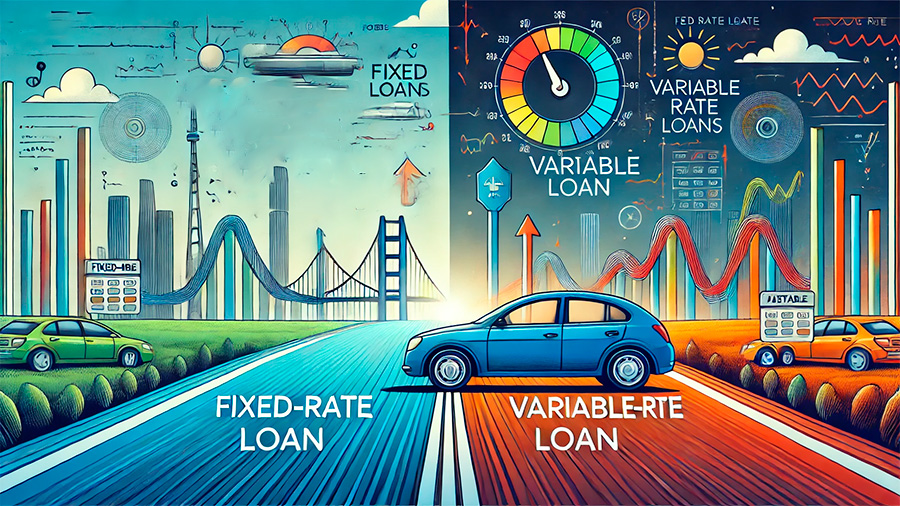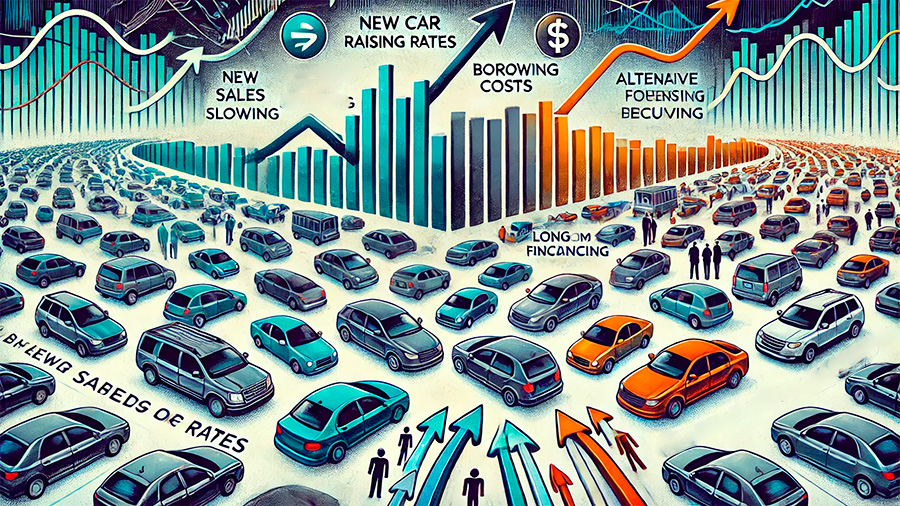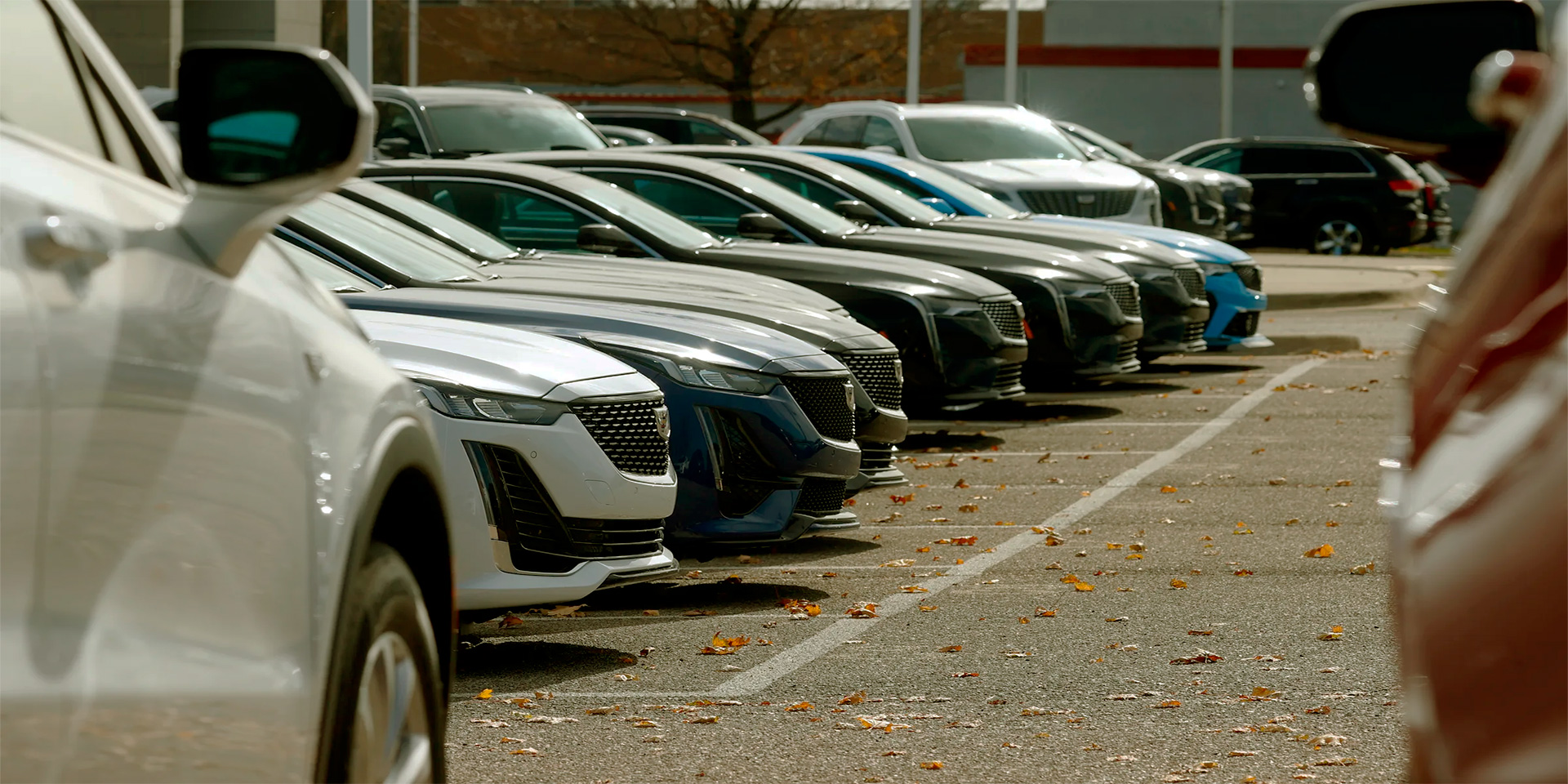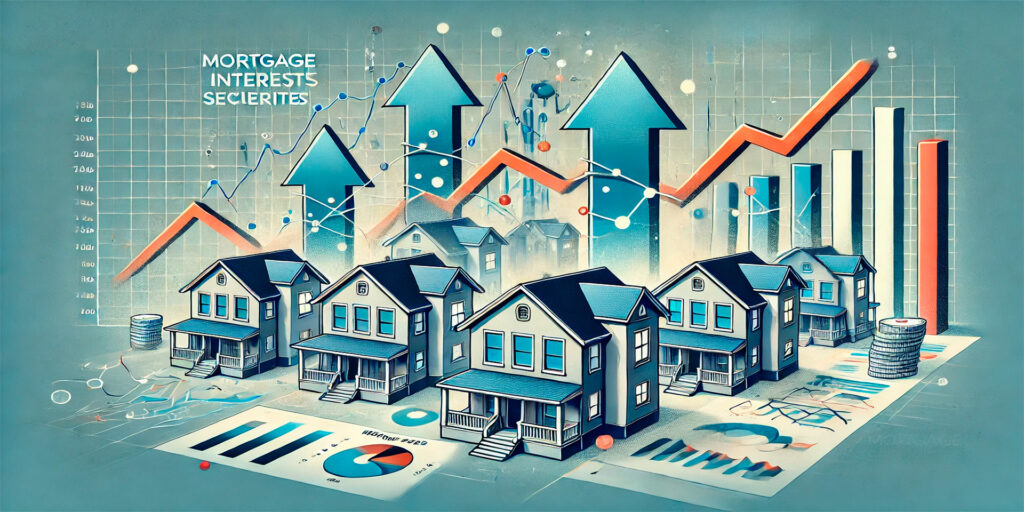The Federal Reserve (Fed) plays a critical role in setting the benchmark interest rate for the U.S. economy, which influences the cost of borrowing across various sectors, including auto loans. When the Fed raises its rate, borrowing becomes more expensive for banks, which in turn pass those costs to consumers. This means that when the Fed increases interest rates, it directly impacts the rates you may be offered for an auto loan, potentially increasing your monthly payments. For anyone financing a vehicle, understanding how a Fed rate hike affects auto loan rates is crucial for managing costs effectively.
Why the Fed Raises Interest Rates
The Federal Reserve raises interest rates as a tool to control inflation. When inflation rises, the Fed hikes rates to slow down borrowing and spending, which helps to reduce inflationary pressure. This monetary policy decision impacts not just consumer loans but also mortgages, credit cards, and even business investments. For auto loans, a higher Fed rate means that banks and lenders will increase their interest rates, leading to more expensive loans for borrowers.
How Auto Loan Rates Respond to Fed Rate Hikes
Auto loan rates are closely tied to the Fed’s interest rate changes. When the Federal Reserve raises its rates, lenders typically increase the interest rates they offer on auto loans. This is because the cost of borrowing for banks rises, and they pass that additional cost onto consumers. A higher interest rate on your auto loan means that you will end up paying more in interest over the life of the loan, which could significantly raise your monthly payments. This can affect both new and used car loans, as well as lease payments, making it more expensive to finance a vehicle.
The Connection Between Fed Rate and Auto Loan Terms
Auto loan rates are generally influenced by two factors: the prime rate and bond market movements, both of which react to the Fed’s rate decisions. When the Fed raises its rates:
- New Loan Applications: Consumers applying for a new auto loan will likely face higher interest rates, leading to larger monthly payments.
- Existing Loans with Variable Rates: If you already have an auto loan with a variable interest rate, your payments could increase after a Fed rate hike.
- Fixed-Rate Loans: For borrowers with fixed-rate loans, the interest rate stays the same throughout the life of the loan, but future borrowers will face higher rates.
Lenders adjust their rates in response to the Fed’s moves, which means that as rates go up, so do auto loan costs.
How a Fed Rate Hike Increases Your Monthly Auto Loan Payments
A Fed rate hike can cause your monthly auto loan payments to rise, especially if you’re taking out a new loan. When interest rates increase, your loan’s interest component becomes more expensive, meaning a larger portion of your monthly payment goes toward interest rather than principal. This makes financing a car more expensive overall. For example, if the interest rate on your loan rises from 4% to 5%, you could see a noticeable difference in your monthly payments depending on the amount borrowed and loan duration.
Impact on Total Interest Paid Over Time
Higher interest rates don’t just affect your monthly payment—they also increase the total amount of interest you pay over the life of the loan. For instance, on a $30,000 loan for five years:
- At 4% interest, you would pay approximately $3,150 in interest over the loan’s term.
- At 5% interest, the total interest paid would jump to roughly $3,968.
This difference highlights how even a small increase in interest rates can significantly impact your long-term financial obligation.

Fixed vs. Variable Rate Auto Loans
The type of auto loan you have can determine how quickly a Fed rate hike affects your payments. Fixed-rate loans lock in your interest rate at the time of the loan agreement, meaning your payments remain stable throughout the term, regardless of any Fed rate hikes. Variable-rate loans, on the other hand, are more susceptible to changes in interest rates. With a variable-rate loan, your payments could increase following a Fed rate hike, as the interest rate adjusts with the market.
Pros and Cons of Fixed-Rate vs. Variable-Rate Loans
- Fixed-Rate Loans: Offer stability and predictability since your payments remain the same even when the Fed raises rates. However, they can come with higher initial interest rates than variable loans.
- Variable-Rate Loans: Often start with lower rates, but they fluctuate based on market conditions. When the Fed raises rates, your payments can increase, leading to higher long-term costs.
For most consumers, a fixed-rate auto loan provides peace of mind, especially in times of rising interest rates, because it shields you from unexpected increases in monthly payments.
How to Prepare for a Fed Rate Hike
If you’re planning to finance a vehicle, it’s important to be aware of the potential impact of a Fed rate hike on your auto loan. Rising rates mean that waiting to secure financing could result in higher monthly payments. To avoid this, consider locking in a low rate if possible before rates rise further. Shopping around for the best rates and comparing loan offers can also help you find more favorable terms.
Strategies to Minimize the Impact of Higher Auto Loan Rates
There are several strategies you can use to mitigate the impact of a Fed rate hike on your auto loan:
- Consider Shorter Loan Terms: While longer-term loans may offer lower monthly payments, they often come with higher interest rates. Opting for a shorter loan term can reduce the total interest paid.
- Increase Your Down Payment: A larger down payment reduces the amount you need to borrow, lowering both your monthly payment and the interest paid over the life of the loan.
- Shop Around for the Best Rate: Different lenders may offer varying interest rates, so it’s important to compare multiple offers before committing to an auto loan.
By planning ahead and taking these steps, you can reduce the financial impact of rising interest rates.

Long-Term Implications of Rising Auto Loan Rates
As the Fed continues to raise rates, the long-term implications for auto financing could become more significant. Over time, as borrowing costs increase, fewer consumers may be able to afford new vehicles, leading to a slowdown in auto sales. This could result in higher used car prices as demand shifts away from new cars. Additionally, higher auto loan rates may force consumers to purchase less expensive vehicles or reconsider financing options.
How to Adapt to Changing Market Conditions
Adapting to rising auto loan rates involves reassessing your financing options and considering alternatives, such as leasing or buying a used car with a shorter loan term. If auto loan rates continue to climb, refinancing may also become an option for some borrowers. Refinancing at a lower rate can reduce your monthly payment and save you money on interest, but timing is key, as rates fluctuate with Fed decisions.
Understanding the connection between Fed rate hikes and auto loan payments is essential for managing your finances effectively. By staying informed about interest rate trends and exploring different financing options, you can make decisions that help you minimize costs and stay ahead of changing market conditions.



